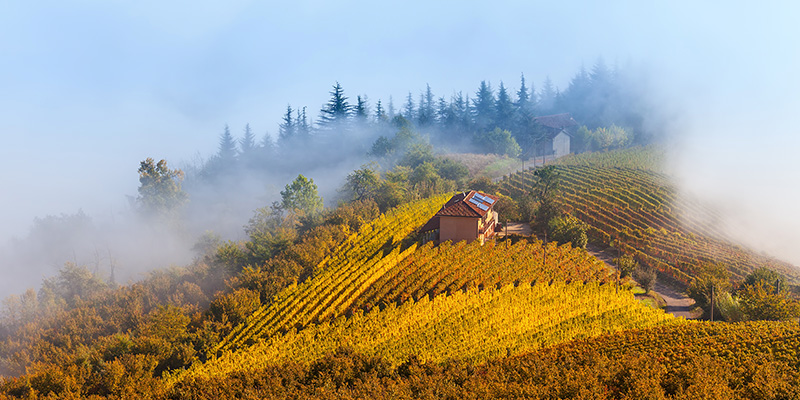Microclimate is a word English teachers love: the definition is self-explanatory. But while it seems easy to understand, the wine jargon that often accompanies wine tastings and tours makes microclimates seem complex and confusing. In truth, microclimates are easy to see and even easier to feel.
Unlike “malolactic fermentation” and other mysteries of winemaking, microclimates are tangible. In fact, so tangible I wished I’d brought a jacket to my recent visit at Lynmar Estate, since it was nearly 20 degrees cooler than my home base, just a 20-minute drive away.
Suddenly, on my drive, the weather had changed from sunny and balmy to foggy, damp, and cold. This wasn’t just Sonoma, this was the Russian River valley and, more specifically, Lynmar Estate’s Quail Hill property.
Nestled in the hills of the Russian River Valley, Lynmar is the perfect example of a microclimate. Soil types visibly crisscross the vineyards in patterns of red and gray, and pockets of fog linger in certain areas for hours, but not in others. In essence, each tiny alcove of different soil, humidity, and temperature is a microclimate.
Simply put, microclimates are the smallest measure of climate, conveniently situated under macro- and mesoclimates. Macroclimates describe large areas defined by certain weather patterns or landforms like mountains, such as Sonoma Valley or Rioja. Mesoclimates refer to smaller, medium-sized areas, like large estates or subregions of an AVA, like the Russian River Valley or Rioja Alta.
Microclimates define small areas, like an individual row of vines or section of a vineyard. While the term can refer specifically to that environment directly over a vine and its individual canopy, the word typically refers to groups of vines. Usually, these areas are defined by soil or elevation changes, proximity to water, or weather patterns like intense winds or cold pockets, for example. At Lynmar Estate, the Quail Hill Vineyard alone has 17 distinct blocks.
Beyond dictating whether shorts or hats are appropriate attire in midsummer, microclimates heavily impact grapes and their resulting wines. These tiny spaces have a different balance of warmth or cold, humidity or dryness than their surrounding areas. Though minute, these factors have a huge impact on how grapes ripen.
For instance, fog blankets grapevines in the Russian River Valley in a cool morning mist, slowing their ripening compared with sun-drenched neighboring vineyards. For delicate Pinot Noir grapes, this slow and gentle ripening is ideal, but other grapes, like Grenache, demand more sunlight to yield delicious vino, making sunny, dry slopes ideal for their cultivation.
Similarly, various soil types provide different levels of water retention to grapevines, making the vines struggle more or less to produce fruit. As a result, vines may yield more fruit, or have smaller, more concentrated clusters. These factors combined give winemakers a different base product at harvest, forming the baseline for singular, delicious wines.
Along with one-of-a-kind virtues, microclimates provide vintners with similarly unique challenges. For example, the same moisture that brings cool temperatures to Sonoma mornings creates perfect conditions for rot, requiring growers to protect their fruit. Sometimes, the conditions even present botrytis, a rare form of rot that makes Sauternes and other dessert wines so amazing, but destroys grapes destined for dry wines.
Together, the balance between these factors forms the basis of terroir, and you can taste it. Cool or cold areas produce wines with lower alcohol than more balmy neighbors. Small clusters from struggling vines contribute more tannins than plump, juicy berries. Likewise, soils with a low pH create grapes and wines with more bright acidity.
They say good wine is made in the vineyard, but more specifically, it’s made by the microclimate. For once, it’s part of winemaking that’s easy to see, feel, and understand. And in wine regions, always remember to pack a sweater.

